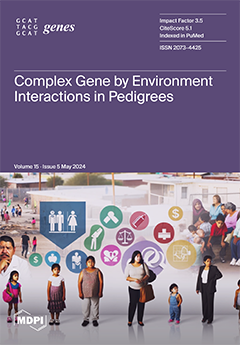The estrogen receptor signaling pathway plays an important role in vertebrate embryonic development and sexual differentiation. There are four major estrogen receptors in zebrafish:
esr1,
esr2a,
esr2b and
gper. However, the specific role of different estrogen receptors in zebrafish is not clear. To investigate the role of
esr2b in zebrafish development and reproduction, this study utilized TALENs technology to generate an
esr2b knockout homozygous zebrafish line. The number of eggs laid by
esr2b knockout female zebrafish did not differ significantly from that of wild zebrafish. The embryonic development process of wild-type and
esr2b knockout zebrafish was observed, revealing a significant developmental delay in the
esr2b knockout zebrafish. Additionally, mortality rates were significantly higher in
esr2b knockout zebrafish than in their wild-type counterparts at 24 hpf. The reciprocal cross experiment between
esr2b knockout zebrafish and wild-type zebrafish revealed that the absence of
esr2b resulted in a decline in the quality of zebrafish oocytes, while having no impact on sperm cells. The knockout of
esr2b also led to an abnormal sex ratio in the adult zebrafish population, with a female-to-male ratio of approximately 1:7. The quantitative PCR (qPCR) and in situ hybridization results demonstrated a significant downregulation of
cyp19ab1b expression in
esr2b knockout embryos compared to wild-type embryos throughout development (at 2 dpf, 3 dpf and 4 dpf). Additionally, the estrogen-mediated induction expression of
cyp19ab1b was attenuated, while the estradiol-induced upregulated expression of
vtg1 was disrupted. These results suggest that
esr2b is involved in regulating zebrafish oocyte development and sex differentiation.
Full article






